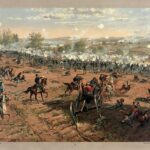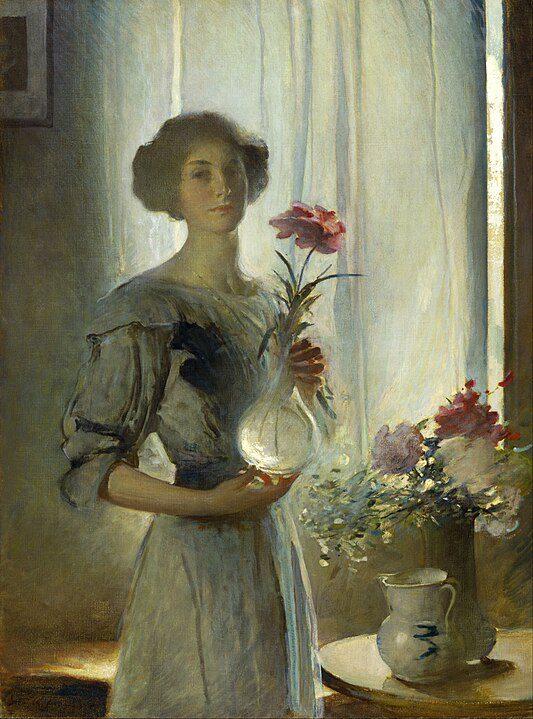
John White Alexander (1856-1915) was an American painter and illustrator known for his captivating portraits, elegant figures, and fluid handling of drapery. Born on October 7, 1856, in Allegheny, Pennsylvania (now part of Pittsburgh), Alexander displayed a natural talent for art from an early age. His career spanned several decades of the late 19th and early 20th centuries, a period during which he achieved significant acclaim both in the United States and abroad. Alexander’s work is characterized by its sensitivity, sophisticated use of color, and the graceful movement of his subjects, qualities that have cemented his reputation as a master of his craft.
Alexander’s journey into the world of art began with an apprenticeship at a local lithography shop in Pittsburgh. Seeking broader horizons, he moved to New York City in the early 1870s, where he worked in Harper’s Weekly as an illustrator. His ambition and talent soon led him to Europe, where he studied in Munich, Germany, under the guidance of Frank Duveneck and Wilhelm von Diez. This European sojourn was crucial in shaping his artistic style, especially his exposure to the works of the Old Masters and the contemporary movements that flourished in the late 19th century.
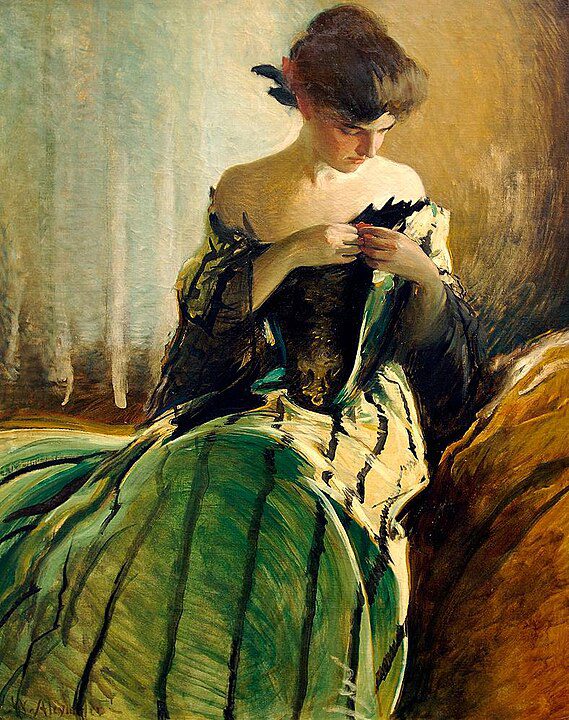
In 1881, Alexander relocated to Paris, immersing himself in the vibrant artistic community of the time. It was here that he transitioned from illustration to painting, focusing on portraiture and genre scenes that showcased his skill in capturing the nuances of human expression and form. His work quickly gained recognition, and he exhibited at the Paris Salon and other prominent venues, earning medals and accolades for his distinct, elegant style.
Introspective Grace
Alexander’s portraits often depicted women in flowing dresses, captured in moments of introspective grace or casual elegance. His use of light, shadow, and color, combined with the fluidity of his brushwork, created a sense of depth and vitality in his subjects. One of his most famous works, “Isabella and the Pot of Basil” (1897), exemplifies his ability to blend narrative, emotion, and aesthetics into a cohesive and compelling visual story.
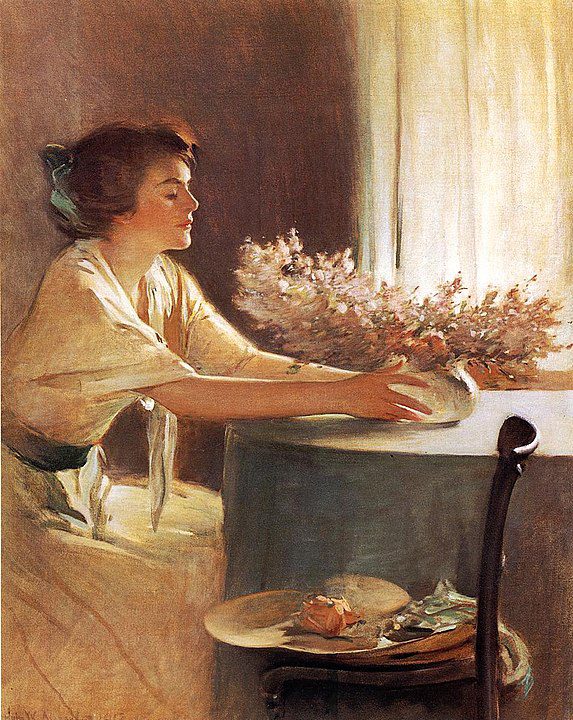
Upon his return to the United States, Alexander continued to enjoy success as a portraitist, securing commissions from notable figures of the day, including presidents and business magnates. His influence extended beyond his own practice; he was actively involved in the American art community, contributing to the formation of the National Society of Mural Painters and serving as president of the National Academy of Design.
Mural Master
Beyond portraiture, Alexander was also recognized for his murals, which adorned several public buildings, including the Library of Congress in Washington, D.C. These works demonstrated his versatility and his ability to work on a grand scale, combining historical and allegorical themes with his signature elegance and fluidity of form.
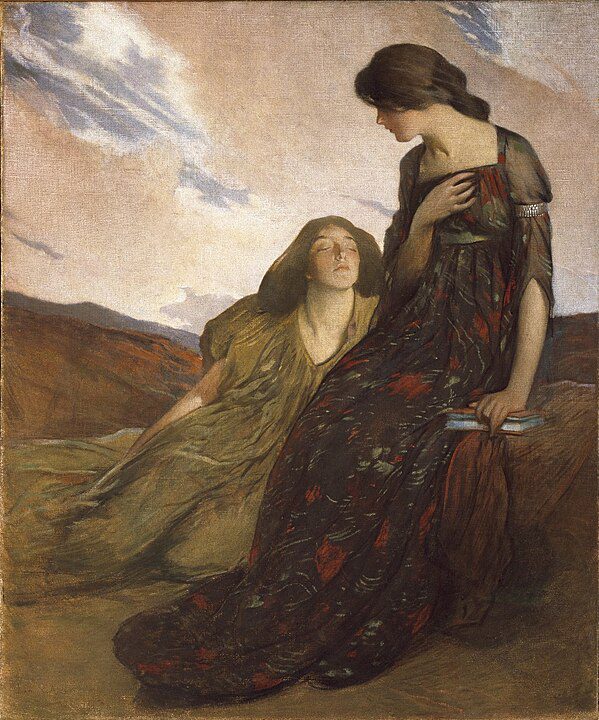
John White Alexander’s legacy is that of an artist who bridged the worlds of illustration and fine art, blending European influences with an inherently American sensibility. His death on May 31, 1915, marked the loss of a significant figure in American art, but his work continues to be celebrated for its beauty, emotional depth, and technical mastery. Alexander’s contribution to the development of American art, particularly in the realm of portraiture and mural painting, remains a testament to his vision and skill.


